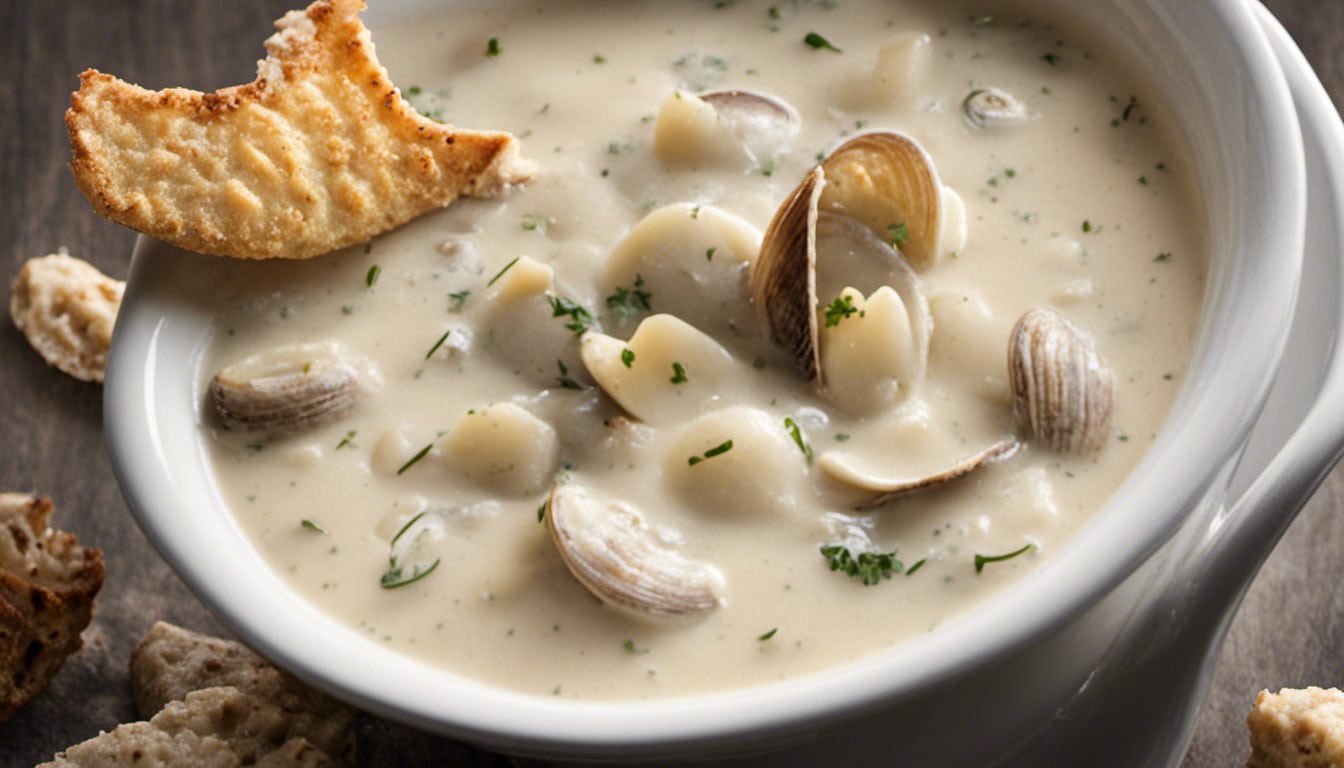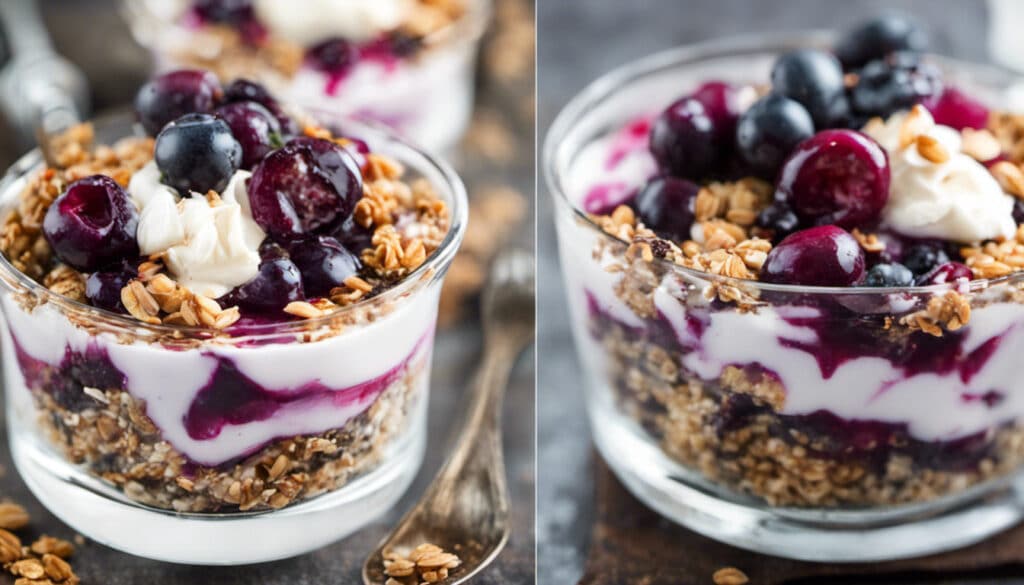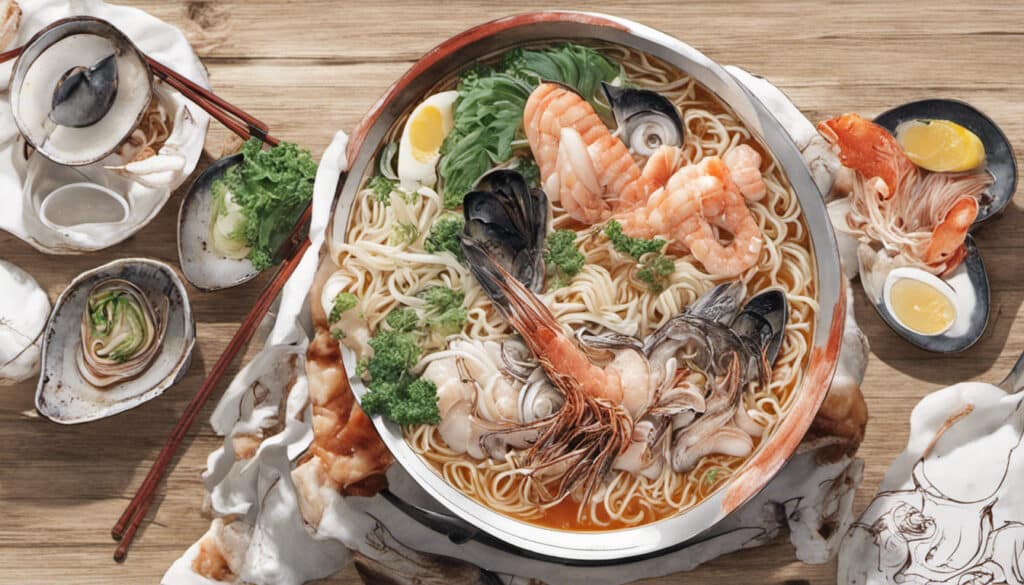| Prep: 15 mins | Cook: 35 mins | Difficulty: Medium | Serves: 6 |
| kcal | fat | saturates | carbs |
| 262 | 6g | 3g | 32g |
| sugars | fibre | protein | salt |
| 7g | 3g | 16g | 1.2g |
Why I Love Canadian Maritime Clam Chowder
There’s something special about settling into the warmth of a traditional Canadian recipe. I’m talking about a hearty bowl of Maritime Clam Chowder. It seems a distance away from the cornrows and cattle ranges of Nebraska where I was raised, but the essence of comfort food is universal. In every spoonful, there’s a comfort that brings warmth in the midst of a deep Canadian winter, or a gusty, corn-swept Nebraskan autumn.
Comfort Food and the Call to Cook
I’ve always had a profound love for homecooked meals and the magic they hold. Growing up in Nebraska, the heartland of America, surrounded by a bounty of fresh ingredients, the romance of slow-cooked beef stews, and the enticing aroma of corn casseroles was a massive part of my culinary journey. The rustic, farm-fresh flavors have heavily influenced my style of cooking. However, the enchantment of Maritime Clam Chowder hails from a different region, threading a wholesome connection from the icy Canadian waters to my kitchen. My love for this recipe is much like my love for my Church — it feeds the soul.
Ingredients and Process
One of the reasons why I admire this Maritime Clam Chowder so much is its simplicity, and the humility of its ingredients. This recipe features a blend of diced onions and celery sautéed in butter, bound with flour, and enriched with whole milk. It’s then flavored with a bay leaf and a sprinkle of dried thyme. The hero of the dish, clams, come into play, swimming in a hearty chicken broth with potatoes and white vinegar. Finally, the chowder finishes with a sprinkle of salt, pepper, and fresh, vibrant parsley.
Inspiration and Adoption
One of the chefs whose recipes have inspired me repeatedly is Chef Michael Smith of Canada. Known for his rustic, farm-to-table style, his approach to cooking is close to my heart. Though the Maritime Clam Chowder isn’t a direct adaptation of his works, his love of seafood has perhaps indirectly ignited my intrigue for recipes like these, tying the bond of Midwestern and Canadian cooking.
If there’s anything that I’ve learned from traversing the culinary landscapes of different regions, it’s the comforting embrace of food that captures the essence of its locality. The Maritime Clam Chowder is one such recipe — a delicious bowl of comfort that warms your heart with its Canadian richness and leaves you dreaming of the stormy seacoast even if you’re nestled deep within the heartland of America.
What You’ll Need
- 2 tablespoons butter
- 2 medium onions, diced
- 1 celery stalk, diced
- 1 teaspoon dried thyme
- 1 bay leaf
- 2 medium potatoes, peeled and diced
- 1 1/2 cups chicken broth
- 1/4 cup all-purpose flour
- 2 cups whole milk
- 2 cans clams, drained and chopped, juice reserved
- Salt, to taste
- Pepper, to taste
- 1/4 cup fresh parsley, chopped
- 1 teaspoon white vinegar
Method
Step One
In a large pot over medium heat, melt the 2 tablespoons of butter. Add the 2 diced medium onions and diced celery stalk. Stir them around in the pot until they become soft, which usually takes about 5-7 minutes.
Step Two
Add the 1 teaspoon of dried thyme and the bay leaf into the pot. Stir well to combine the ingredients.
Step Three
Add the diced potatoes and 1 1/2 cups of chicken broth to the pot. Bring the mixture to a boil. After it’s boiling, reduce the heat to low, cover, and let it simmer until the potatoes are tender. This typically takes about 10-15 minutes.
Step Four
In a separate bowl, whisk the 1/4 cup of all-purpose flour into the 2 cups of whole milk until it’s smooth. Gradually stir this milk mixture into the pot.
Step Five
Drain the clams, but save the juice. Stir the chopped clams, clam juice, salt to taste, and pepper to taste into the pot. Let the chowder cook, while stirring frequently, until it thickens up. This usually takes about 10-15 minutes.
Step Six
Right before you serve the chowder, stir in the 1/4 cup of chopped fresh parsley and 1 teaspoon of white vinegar. Let it cook for another couple of minutes, then it’s ready to serve!




